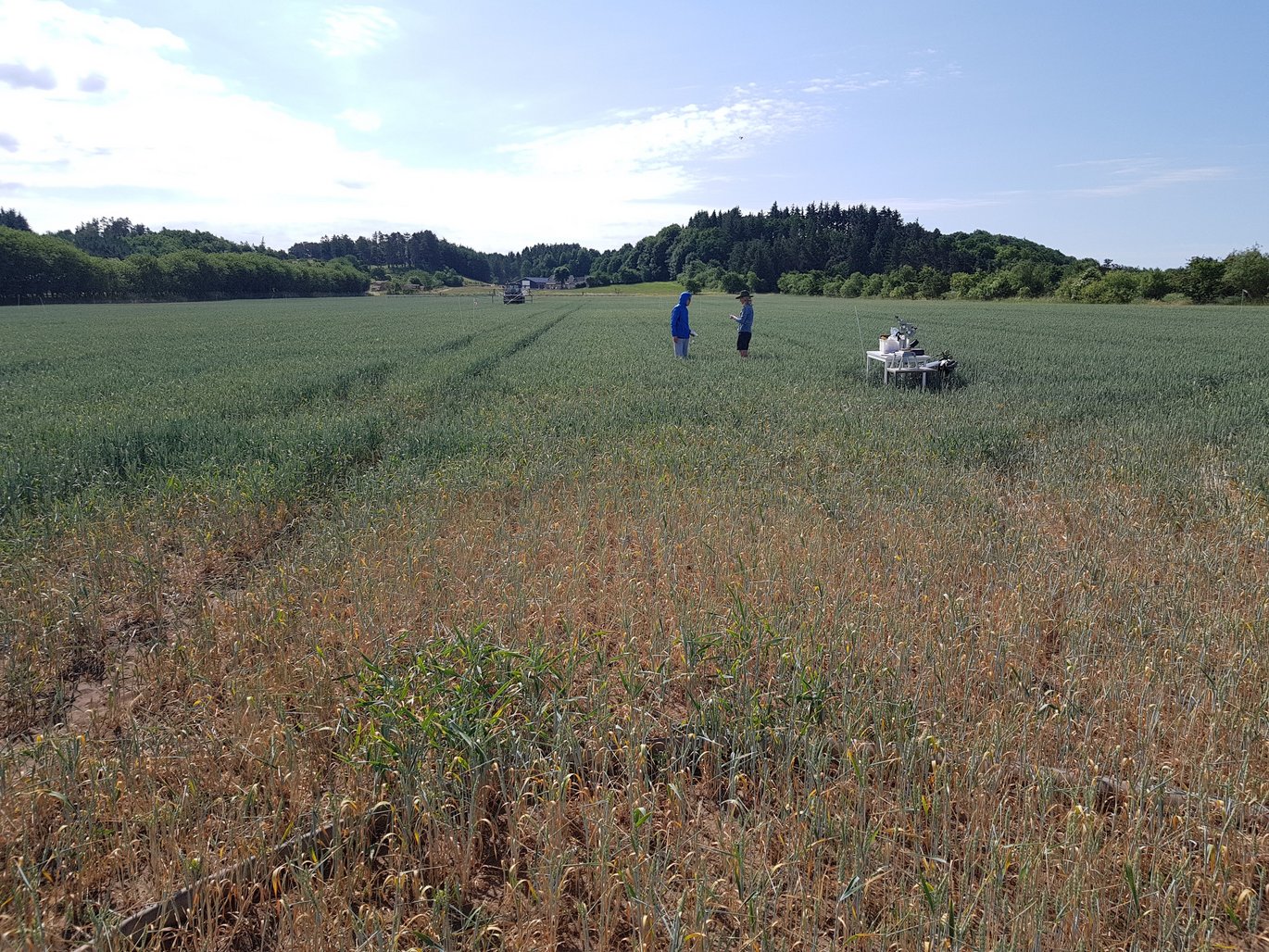Climate change induced drought threatens the world's wheat production
In the coming years, a growing portion of the global wheat growing areas will be affected by drought and this will have serious consequences for the global food supply. It may lead to a significant reduction of the wheat harvest by the turn of the century. Even if global warming is limited to the 2 degrees as stipulated in the Paris Agreement of 2015, a doubling of the severely drought-affected area cannot be avoided. This is revealed in a new study just published in Science Advances. Professor of climate change and agriculture Jørgen E. Olesen from the Department of Agroecology at Aarhus University is a part of the international research group behind the study.

Wheat is the most cultivated crop in the world and it is a basic food in virtually all cultures. It is also grown on all continents, except Antarctica. According to FAO (Food and Agriculture Organization of the United Nations), wheat represents approx. 20% of the calories consumed by people worldwide, which is more than rice and maize combined. The demand for wheat is increasing as global population increases.
Wheat production is dependent on rain
Unlike many other crops, wheat is mostly rainfed, and thus cultivated without irrigation. In other words, the wheat depends on the water naturally present in the soil and supplied by rainfall. This means that wheat is one of the crops most threatened by increased temperatures and changing drought conditions.
“Climate change globally leads to increased temperatures. With it comes increased evapotranspiration and greater drought-affected wheat growing areas,” Professor Jørgen E. Olesen explains. Along with his fellow scientists he has mapped the drought effect on wheat acreage to look at the fluctuations in drought from past to present. “We have looked at the growth periods and calculated an index for drought. From there, we could see just how much of the wheat growing area has been affected by severe drought each year,” he explains. The calculations are based on the observed climate, and if you look at the time from 1900 and onwards, the drought-affected area has remained fairly stable, until 20 years ago when something suddenly happened.
Increase in temperature has serious consequences
”About twenty years ago, the drought-affected wheat area suddenly began to expand," Jørgen E. Olesen says, "and it is still expanding." The measurements shows that areas affected by severe drought began to rise, and larger drought-affected areas appeared. In addition, the data shows a good correlation between the size of the drought-affected areas and food prices. The greater the drought-affected areas the higher the prices.
"It shows that a large part of the fluctuations in wheat production are related to the amount of cultivation area affected by severe drought," Jørgen E. Olesen explains. In other words, if a larger proportion of the cultivated area is affected by drought, the wheat production will be correspondingly smaller and food prices will rise.
According to the researchers, the drought-affected area is still rising and the increase appears to be continuing. “And that is very serious,” says Jørgen E. Olesen. "We have looked at how it will develop in the future under different scenarios," he explains. Among other things, the research team has looked at the goal of the 2015 Paris Agreement to limit the global temperature rise to below two degrees Celsius, as well as two scenarios with even higher rises in temperature.
A significant reduction in wheat production
The study shows that approx. 15% of the cultivated wheat area is affected by severe drought at the present. But up to 30% will be affected in the future, even if the climate efforts of the Paris Agreement is respected. “We cannot avoid the fact that water scarcity will have very serious consequences for wheat. Not even in a world that is "only" 2 degrees warmer than preindustrial, or if we do fight climate change according to the ambitions of the Paris Agreement. No matter what, we need to adapt the world's food production to increased droughts and water scarcity,” Jørgen E. Olesen states. The drought impact will hit the top ten wheat export areas, including Europe, the United States and Australia hardest. But it is the developing countries that, as the largest importers of wheat, will suffer from increased food prices.
"This is very serious," says Jørgen E. Olesen, "greenhouse gas emissions continues to rise, and without a significant reduction effort the temperature will rise by 4-5 degrees and the drought-affected area for wheat will increase to around 60% towards the end of the century. This would seriously reduce global wheat production.” The consequences of a global warming of just 2 degrees are very serious, not only for agriculture, but for the world's population. “There is not only a need for the world to reduce greenhouse gas emissions. We need to expand research on adaptation to climate change, especially for increased drought. We need to look at more than the cultivation of drought resilient crops, including new cultivation systems and tillage methods that better harvest and retain rainfall. If we are not able to limit climate change to 2 degrees, it will be very difficult to ensure stability in the world's food supply,” Jørgen E. Olesen concludes.
Publication
“Mitigation efforts will not fully alleviate the increase in water scarcity occurrence probability in wheat-producing areas.” Science Advances, 25 September 2019. Miroslav Trnka, Song Feng, Mikhail A. Semenov, Jørgen E. Olesen*, Kurt Christian Kersebaum, Reimund P. Rötter, Daniela Semerádová, Karel Klem, Wei Huang, Margarita Ruiz-Ramos, Petr Hlavinka, Jan Meitner, Jan Balek, Petr Havlík & Ulf Bu?ntgen.
*researcher affiliated with Aarhus University
For more information
Professor Jørgen E. Olesen, Department of Agroecology, Aarhus Universitet. Mail: jeo@agro.au.dk, Phone: +45 4082 1659
